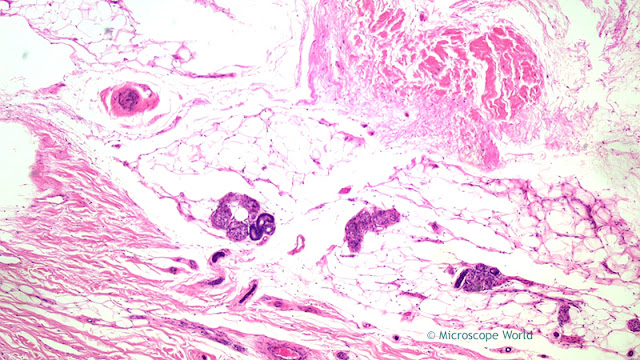 |
| Human nonpigmented skin under the microscope at 40x. |
If the body produces too little melanin, the skin gets lighter. Vitiligo is a condition where the skin gets lighter in patches. Albinism is a genetic condition where the skin is affected by little or no melanin production. The skin might have no color (nonpigmented skin), or it may be lighter than the normal colored skin. It can also show up as patches of skin with no color.
 |
| Human nonpigmented skin under the microscope at 100x. |
Another cause of nonpigmented skin can be a result of blisters or burns. These often result in skin becoming nonpigmented after it heals.
 |
| Human nonpigmented skin under the microscope at 400x. |
When the human body produces too much melanin, the skin becomes darker. Addison's disease, sun exposure and pregnancy can also cause the skin to become darker.
 |
| Human nonpigmented skin under the microscope at 400x using a Plan Fluor Objective Lens. |
All images above were captured using the RB30 lab microscope. Images were captured to a SD card using the HDCAM7 HD microscopy camera.